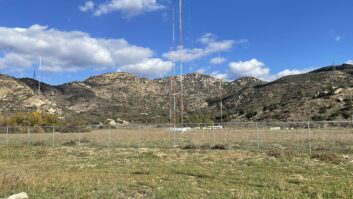 The Educational Media Foundation is urging the Federal Communications Commission to decide quickly about FM6 stations — those low-power TV stations known as Franken FMs that effectively operate as radio stations in some cities, heard on 87.7 MHz just below the U.S. FM band.
The Educational Media Foundation is urging the Federal Communications Commission to decide quickly about FM6 stations — those low-power TV stations known as Franken FMs that effectively operate as radio stations in some cities, heard on 87.7 MHz just below the U.S. FM band.
Those stations will go away when LPTV stations are required to cease analog service on July 13 as part of the nation’s digital TV migration.
The FM6 stations are already six years past when we first thought the stations would be forced to shut down. And many radio broadcasters think these “radio” operations should not be allowed anyway, because the underlying TV licenses were not issued with radio service in mind.
The FCC has been considering allowing an exemption to keep them operating. We already knew that the big Christian noncommercial broadcaster was a supporter; it told the FCC earlier that “FM-on-LPTV stations are already operating and not causing interference at the lowest end of the FM band.”
Now, given the July 13 deadline for LPTVs to cease analog service entirely, EMF Vice President of Operations and Engineering Sam Wallington has written again to the commission.
He asked it to “act expeditiously on this matter” because stations need to be able to plan “to avoid a potential unhappy surprise should their audiences lose service that they have enjoyed for many years.” And he took the opportunity to reiterate EMF’s hope that the FCC will protect the stations.
EMF operates the K-Love and Air1 networks. It also has an FM6 signal of its own.
“EMF has been able to expand the coverage for its programming by using the analog audio channel of KBKF(LP), San Jose, Calif., which has been received by the public on their FM radio dial at 87.7 since August 2010,” Wallington wrote.
“This service is a benefit to the community, providing well-received programming to the residents of the San Jose area. Especially in larger markets like San Jose, much, if not all, of the FM band has been claimed, leaving little room for noncommercial services like those that EMF provides on 87.7 MHz.”
Silencing the station, he said, would leave a void; he said other operators have reported similar experiences.
“There is no apparent technological or policy reason — and certainly no public interest benefit — for ending FM-on-LPTV service. In fact the [TV] digital transition and preservation of analog audio on 87.7 puts the commission in a win-win position — viewers receive all the benefits of digital television on Channel 6 while the audio channel can be preserved to serve current listeners and be available for future listeners to discover.”
Opponents to the dual-mode operation, including National Public Radio, say the stations flout FCC rules and are misusing the spectrum. In addition, NPR has voiced concerns about interference to stations in the adjacent reserved band.
The term Franken FM was coined early in their history by online observers and promulgated by Radio World. It plays on the word Frankenstein and refers to what some consider their unnatural combination of licenses (or body parts).
[Related: “Goodbye, Frankens? TV Deadline Approaches”]











